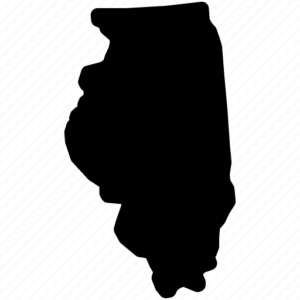(a) Institution of proceedings. Proceedings in the Supreme Court when the court has original and exclusive jurisdiction under article IV, section 3, and article V, section 6(d), of the Constitution, which relate to redistricting of the General Assembly and to the ability of the Governor to serve or resume office, shall be instituted by filing a motion for leave to file a complaint, which motion shall be accompanied by the complaint and a brief in support of the motion. The complaint may be supported by affidavits or other pertinent documents.
(b) Subsequent Procedure. Thereafter the case shall proceed in the manner ordered by the court. Whenever appropriate, and subject to order of the court, the rules governing cases in the circuit court shall serve as a guide to the procedure to be followed. The court may dispose of the case on the documents filed or may order further briefing or may order oral argument on the motion for leave to file or on the complaint or on the pleadings or on the pleadings supplemented by pertinent documentary evidence, or may call for additional evidence and for briefs and argument after such evidence has been received. If the court determines that disputed issues of material fact must be resolved on the basis of oral testimony, it may appoint a judge or retired judge of any Illinois court to take testimony and to report his findings of fact and recommendations to the Supreme Court.
(c) Briefs, Pleadings, and Other Documents. Briefs, pleadings, and other documents filed with the Supreme Court in cases covered by this rule shall, to the extent appropriate, conform to Rules 341 through 344.
Effective July 1, 1971; amended December 17, 1993, effective February 1, 1994; amended June 22, 2017, eff. July 1, 2017.
Committee Comments
(July 1, 1971)
This rule is based in part upon Rule 381 and in part upon Rule 9 of the United States Supreme Court Rules and the practice thereunder, which enables that court to deal with original cases involving factual issues requiring the taking of evidence. The object is to give the court complete flexibility as to the procedure to be followed, depending upon the circumstances of the particular case. The procedures most likely to be employed, which have been employed by the United States Supreme Court, are specifically described because of the unfamiliarity of some of such procedures in prior Illinois practice.
The defendant need take no action until the Supreme Court indicates what is appropriate. If the court deems the complaint obviously insufficient on its face, it may dispose of the case without calling the defendant to do anything. It may request the defendant to file either an answer to the complaint or a brief, in part depending on whether factual issues are presented. Because of the constitutional prohibition against “fee officers in the judicial system” (art. VI, §14), the evidence must be taken by an active or retired judge, who will be already receiving a State salary, rather than by a master.

